#Redis protocol
Explore tagged Tumblr posts
Text
How to Build a Scalable Online Pharmacy Like 1mg in 2025
In recent years, the digital health space has surged, and platforms like 1mg have revolutionized how people access medicines, diagnostics, and healthcare advice online. With the Indian ePharmacy market projected to surpass $10 billion by 2025, the opportunity to launch a 1mg clone has never been more lucrative. But building a scalable, compliant, and user-friendly online pharmacy requires more than just app development — it requires vision, planning, and strategic execution.

Step-by-Step Blueprint to Build a Scalable 1mg Clone in 2025
1. Start with a Viable Business Model
Before jumping into development, define your core business model:
B2C Online Pharmacy
Marketplace for Pharmacies
Subscription-based Healthcare
Omnichannel Model (online + in-store pickup)
Pro Tip: Focus on solving accessibility, affordability, and trust — pillars of 1mg’s success.
2. Build Key Modules and Core Features
Your app should replicate and improve upon 1mg’s functional offerings:
User-side Features
Medicine search & filters
Prescription upload
Smart cart & checkout
Order tracking
Doctor consultation
Lab test booking
Pill reminder notifications
Admin & Pharmacy Panel
Inventory and stock control
Order assignment & fulfillment
Dynamic pricing & promotions
Reports, analytics, and compliance dashboard
Security & Compliance
CDSCO certification & eRx protocols
User data encryption (HIPAA/GDPR aligned)
eKYC for users and pharmacists
3. Use a Scalable Tech Stack
To handle high transaction volumes and real-time logistics, opt for:
Frontend: React Native or Flutter (cross-platform)
Backend: Node.js + Express / Django + Python
Database: PostgreSQL + Redis (for cache optimization)
Cloud Infra: AWS or GCP for elastic scalability
APIs: Drug database, eRx integration, payment gateways
4. Integrate Real-Time Logistics and Telehealth
Live delivery tracking via GPS
Pharmacy slot optimization for delivery routing
Video consultation via WebRTC or Zoom SDK
5. Make Your App Compliant from Day 1
Ensure you’re aligned with:
Indian Telemedicine Practice Guidelines
Pharmacy Act, Drugs & Cosmetics Act
CDSCO licensing for online medicine sales
6. Focus on Growth-Driven UX & Personalization
AI/ML tools can:
Suggest reorders
Personalized care increases retention and LTV.
Recommend products based on purchase behavior
Predict medicine demand by region/season
7. Implement a Future-Proof Monetization Strategy
You can monetize via:
Medicine margin markup
Featured listings for pharmacies
Subscription plans for chronic care users
Teleconsultation fees
Sponsored health content
For building 1mg clone refer our blog 1mg Clone App Explained: What It Is and How It Works
Conclusion: Why Miracuves is Your Ideal Partner to Build a 1mg Clone
Building a scalable 1mg clone app in 2025 is no small feat — it requires technical expertise, domain knowledge, and regulatory awareness. This is where Miracuves comes in.
At Miracuves, we specialize in healthtech platform development, offering:
Ready-to-deploy 1mg clone solutions
Custom development tailored to your region & regulations
Secure and scalable cloud architecture
End-to-end support from launch to growth
Whether you’re a startup, hospital group, or pharmacy chain, our white-label online pharmacy platform empowers you to launch fast and scale smart.
Let Miracuves transform your digital health vision into a reality. Contact us to get started today!
0 notes
Text
How APIs Power Modern Websites – A Think To Share IT Solutions Insight
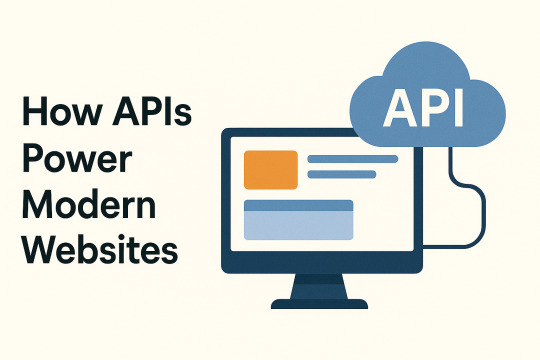
Modern websites are no longer static brochures. They’re dynamic, data-driven platforms that interact with various services in real time. At the core of this interactivity lies a powerful and essential component: the API, or Application Programming Interface.
At Think To Share IT Solutions, we engineer websites that aren’t just visually compelling—they’re functionally superior, thanks to smart API integrations that enable real-time performance, seamless communication, and scalable features.
What is an API?
An API (Application Programming Interface) is a set of protocols and tools that allow software applications to communicate with each other. In web development, APIs act as bridges that connect your website to external or internal systems.
Instead of building every function from scratch, APIs allow developers to integrate existing, trusted services—making websites faster, more reliable, and more scalable.
How APIs Power Modern Websites
1. Dynamic Content Delivery
APIs allow websites to fetch and display real-time content from a database or CMS without refreshing the page. This improves performance and user experience.
Example: A blog or news portal pulling updated articles from a headless CMS like Strapi or WordPress via REST API.
2. User Authentication and Access Control
APIs handle secure user logins and permission-based access. Authentication services like Google OAuth or Auth0 rely entirely on API interactions.
Example: "Sign in with Google" uses an external API to verify the user's identity securely without storing sensitive data on your own servers.
3. Third-Party Service Integrations
APIs enable seamless integration with third-party platforms for added functionality.
Function
API Providers
Payments
Stripe, Razorpay, PayPal
Email Marketing
Mailchimp, SendGrid
Analytics
Google Analytics, Matomo
Customer Support
Zendesk, Intercom
Maps & Location
Google Maps API, Mapbox
These integrations enhance user experience without compromising performance or security.
4. Real-Time Features and Updates
Websites that support live chat, order tracking, or instant notifications use APIs to communicate with real-time databases.
Example: Firebase and Pusher APIs power real-time chat interfaces or live delivery status updates.
5. E-Commerce Functionality
Modern eCommerce websites rely on APIs to handle inventory updates, pricing changes, order processing, and shipping logistics.
What We Implement:
Cart management via REST or GraphQL APIs
Real-time pricing and availability updates
Shipment tracking using courier APIs (e.g., Delhivery, Shiprocket)
6. Headless Architecture
In a headless setup, APIs serve as the communication layer between the front-end and the back-end. This decoupling improves performance and allows for more flexible design and delivery across platforms.
Example: Using Next.js (for the front-end) and Strapi or Sanity (as the headless CMS), data is fetched via API endpoints and rendered statically or server-side for speed and SEO.
Benefits of API-Driven Web Development
Benefit
Explanation
Faster Deployment
Plug in pre-built services instead of coding everything from scratch
Scalability
Easily add new features or services without overhauling your system
Enhanced Security
Offload sensitive functions like payments to trusted platforms
Maintainability
Isolated services reduce complexity and ease troubleshooting
Cross-Platform
Share the same API with mobile apps, web apps, and IoT devices
How Think To Share Implements API-Driven Architecture
Our development process incorporates API planning from the very beginning:
Architecture Planning: Identify necessary APIs based on business goals
Security: Implement OAuth2, JWT tokens, and rate limiting for secure access
Performance: Use caching mechanisms (Redis, CDN) to reduce API load
Monitoring: Set up logging, error tracking, and fallback handling for resilience
Documentation: Provide detailed API docs using tools like Swagger or Postman
Final Thoughts: APIs Are the Backbone of Modern Websites
APIs have evolved from technical add-ons to mission-critical infrastructure for digital platforms. Whether you're running a website, mobile app, or enterprise software, APIs allow you to build faster, scale smarter, and connect deeper with users.
At Think To Share IT Solutions, we design and develop high-performance web systems that are modular, connected, and built for long-term growth—powered by reliable, secure, and well-integrated APIs.
0 notes
Text
Bigo Live Clone Development: How to Build a Secure & Scalable Platform

Introduction
A Bigo Live clone is a live streaming app that allows users to broadcast videos, interact with viewers, and monetize content. The demand for live streaming platforms has grown rapidly, making it essential to build a secure and scalable solution. This guide explains the key steps to develop a Bigo Live clone that ensures smooth performance, user engagement, and safety.
Key Features of a Bigo Live Clone
1. User Registration & Profiles
Users sign up via email, phone, or social media.
Profiles display followers, streams, and achievements.
Verification badges for popular streamers.
2. Live Streaming
Real-time video broadcasting with low latency.
Support for HD and ultra-HD quality.
Screen sharing and front/back camera switching.
3. Virtual Gifts & Monetization
Viewers send virtual gifts to streamers.
In-app purchases for coins and premium gifts.
Revenue sharing between streamers and the platform.
4. Chat & Interaction
Live comments and emojis during streams.
Private messaging between users.
Voice chat for real-time discussions.
5. Multi-Guest Streaming
Multiple users join a single live session.
Useful for interviews, collaborations, and group discussions.
6. Moderation Tools
Admins ban users for rule violations.
AI detects inappropriate content.
User reporting system for abusive behavior.
7. Notifications
Alerts for new followers, gifts, and streams.
Push notifications to keep users engaged.
8. Analytics Dashboard
Streamers track viewer count and earnings.
Insights on peak streaming times and audience demographics.
Steps to Develop a Bigo Live Clone
1. Choose the Right Tech Stack
Frontend: React Native (cross-platform), Flutter (for fast UI)
Backend: Node.js (scalability), Django (security)
Database: MongoDB (flexibility), Firebase (real-time updates)
Streaming Protocol: RTMP (low latency), WebRTC (peer-to-peer)
Cloud Storage: AWS S3 (scalable storage), Google Cloud (global reach)
2. Design the UI/UX
Keep the interface simple and intuitive.
Use high-quality graphics for buttons and icons.
Optimize for both mobile and desktop users.
3. Develop Core Features
Implement secure user authentication (OAuth, JWT).
Add live streaming with minimal buffering.
Integrate payment gateways (Stripe, PayPal) for virtual gifts.
4. Ensure Security
Use HTTPS for encrypted data transfer.
Apply two-factor authentication (2FA) for logins.
Store passwords with bcrypt hashing.
5. Test the Platform
Check for bugs in streaming and payments.
Test on different devices (iOS, Android) and network speeds.
Conduct load testing for high-traffic scenarios.
6. Launch & Maintain
Release the app on Google Play and Apple Store.
Monitor performance and fix bugs quickly.
Update regularly with new features and security patches.
Security Measures for a Bigo Live Clone
1. Data Encryption
Encrypt user data in transit (SSL/TLS) and at rest (AES-256).
2. Secure Authentication
Use OAuth for social logins (Google, Facebook).
Enforce strong password policies (minimum 8 characters, special symbols).
3. Anti-Fraud Systems
Detect fake accounts with phone/email verification.
Block suspicious transactions with AI-based fraud detection.
4. Content Moderation
AI filters offensive content (hate speech, nudity).
Users report abusive behavior with instant admin review.
Scalability Tips for a Bigo Live Clone
1. Use Load Balancers
Distribute traffic across multiple servers (AWS ELB, Nginx).
2. Optimize Database Queries
Index frequently accessed data for faster retrieval.
Use Redis for caching frequently used data.
3. Auto-Scaling Cloud Servers
Automatically add servers during high traffic (AWS Auto Scaling).
4. CDN for Faster Streaming
Reduce latency with global content delivery (Cloudflare, Akamai).
Conclusion
Building a Bigo Live clone requires a strong tech stack, security measures, and scalability planning. By following these steps, you can create a platform that handles high traffic, engages users, and keeps data safe.
For professional Bigo Live clone development, consider AIS Technolabs. They specialize in secure and scalable live streaming solutions.
Contact us for a detailed consultation.
FAQs
1. What is a Bigo Live clone?
A Bigo Live clone is a live streaming app similar to Bigo Live, allowing users to broadcast and monetize content.
2. How long does it take to develop a Bigo Live clone?
Development time depends on features, but it typically takes 4-6 months.
3. Can I add custom features to my Bigo Live clone?
Yes, you can include unique features like AR filters or advanced monetization options.
4. How do I ensure my Bigo Live clone is secure?
Use encryption, secure authentication, and AI-based moderation.
5. Which cloud service is best for a Bigo Live clone?
AWS and Google Cloud offer strong scalability for live streaming apps.
0 notes
Text
How to Create a Real-Time Chat Application?
In the fast-paced world of Web Development Services, real-time communication has become an essential feature for modern applications. Whether you're creating a customer support system, a collaborative workspace, or a social networking platform, real-time chat improves user engagement and interaction. With the rise of advanced frameworks and tools like Magento web development, implementing such features has become easier than ever.

Understanding Real-Time Chat Applications
Real-time chat applications allow users to communicate instantly via the internet. Unlike traditional messaging systems, which rely on periodic refreshes, real-time chat uses advanced protocols such as WebSockets to deliver messages immediately. This immediate delivery guarantees a seamless and interactive experience.
Real-time chat applications have the following key features: • Instant messaging enables real-time delivery of text, media, and files. • Provide secure sign-in processes to protect user data. • Chat Rooms: Public and private spaces for group discussions. • Receive real-time alerts for new messages. • Message History: Stores and retrieves past conversations.
Tech Stack for Building a Real-Time Chat Application
Choosing the appropriate technology stack is critical for developing a robust real-time chat application. Here are some frequently used tools and frameworks: • Frontend HTML, CSS, and JavaScript. Framework: React, Angular, and Vue.js. • Backend Node.js (using Express or Fastify) Python (Django or Flask) • Real-time communication WebSockets (Socket.IO for Node.js) Firebase Real-time Database. • Database MongoDB (NoSQL) PostgreSQL (SQL). • Deployment Docker (containerization) AWS, Azure, or Google Cloud (for hosting)
Step-by-Step Guide to Building a Real-Time Chat Application
1. Set Up the Environment
Begin by making a new project directory and starting a Node.js application. Make sure you install the necessary packages for backend and real-time communication support.
2. Build the Server
Create a basic server with your preferred backend technology. Add WebSocket support for real-time message delivery between clients.
3. Create the Frontend
Create a simple and intuitive user interface for sending and receiving messages. Connect it to a backend that supports WebSockets to ensure compatibility with real-time updates.
4. Implement User Authentication
Secure user authentication can be integrated into a production-grade application using JWT (JSON Web Tokens) or OAuth. This ensures that only authorized users can read and send messages.
5. Optimize and Scale
To deal with increased user traffic, consider these optimization techniques: • Load balancing: Distribute traffic among multiple servers. • Optimize queries for faster retrieval through database indexing. • Use Redis for faster data access.
Testing and Deployment
Test your application thoroughly to find and fix bugs. To deploy the app, containerize it with Docker and host it on cloud services such as AWS or Azure for scalability and reliability. Real-time chat applications are built using modern frameworks and communication protocols. With the right approach and technology stack, you can create a scalable and responsive chat platform. By utilizing Web Development Services and Magento web development, you can ensure that your application meets modern user expectations while maintaining high performance.
0 notes
Text
DataCAMP is a Cutting-edge Platform Designed for Big Data Intelligence | AHHA Labs

AHHA Labs' DataCAMP is a cutting-edge platform designed for big data intelligence, catering to the needs of modern industrial, enterprise, and data-driven ecosystems. It harnesses advanced AI and big data technologies to streamline data processing, analysis, and actionable insights.
DataCAMP Compatible with Legacy Systems Manage all manufacturing big data in an integrated manner with easy compatibility with legacy equipment, existing production systems, and commercial analysis tools.
Batch collect and transmit manufacturing data using various communication protocols.
DataCAMP widely supports most communication protocols used in industry, including FTP, network drives, TCP/IP sockets, Modbus/MELSEC, REDIS, and AMQP. Through this, users can conveniently collect all types of data, such as inspection images, inspection results, CCTV images, sound data, vibration data, and PLC data generated from various facilities and sensors. DataCAMP supports a user-friendly data query interface and data set export function, allowing easy transfer to various legacy systems such as MES and ERP as well as external commercial analysis tools.
Easy and fast automatic pre-processing
The data produced by numerous devices comes in various formats, such as CSV, JSON, and YAML. Since this equipment data is not directly compatible, each data set must be checked individually. To understand the entire factory status, you must convert each file format one by one and collect the data.
DataCAMP automates this process. Use the recipe function to convert and integrate various structured/unstructured data into the desired format. Users can directly specify the output data format for transmission and storage to legacy systems such as NAS and DB. DataCAMP also supports multiple techniques, including regular expressions (RegEx), a powerful string processing tool, to automatically perform data referencing, insertion, removal, merging, statistical pre-processing, and event triggering.
If you are looking for big data intelligence, you can find it at AHHA Labs.
Click here to if you are interested in AHHA Labs products.
View more: DataCAMP is a Cutting-edge Platform Designed for Big Data Intelligence
0 notes
Text
Using Redis for Real-Time Chat Applications and WebSockets
Introduction Using Redis for Real-Time Chat Applications and WebSockets is a powerful approach to building scalable and efficient chat systems. Redis, an in-memory data store, provides a unique combination of speed, reliability, and flexibility that makes it an ideal choice for real-time applications. WebSockets, a protocol for bidirectional, real-time communication between a client and a…
0 notes
Text
How a .NET Development Company Can Help Build High-Performance APIs
In today’s fast-paced digital landscape, APIs (Application Programming Interfaces) are the foundation of connectivity between diverse software applications, driving efficiency and interoperability across platforms. As businesses strive to enhance user experience, scalability, and functionality, building high-performance APIs becomes a priority. A reliable .NET Development Company can bring robust expertise in API development, ensuring secure, scalable, and efficient solutions that meet unique business needs. In this article, we’ll explore how a .NET development company contributes to high-performance API development, key benefits of leveraging .NET for APIs, and considerations when migrating from legacy systems, such as Migrating from ColdFusion to ASP.NET Core.
Why .NET for API Development?
The .NET framework, and more recently .NET Core, provides a comprehensive set of libraries, tools, and features to build efficient APIs. It supports multiple programming languages (such as C# and F#), runs on multiple operating systems (Windows, Linux, macOS), and offers strong compatibility with various platforms. This flexibility and power make .NET a solid choice for developing APIs tailored for performance, security, and scalability.
Key Benefits of .NET for High-Performance APIs
Speed and Performance: .NET is known for its high-speed execution and optimized performance, which is critical for APIs that must handle many requests quickly. .NET Core, in particular, is designed with speed in mind, offering enhancements that ensure minimal memory usage and high throughput.
Cross-Platform Compatibility: .NET Core’s ability to operate across different operating systems enables companies to build APIs compatible with Linux, Windows, and macOS. This allows APIs to be deployed seamlessly in varied environments, supporting a broad range of clients.
Security and Reliability: Security is essential for any API, and .NET’s built-in authentication and authorization features provide a strong foundation. Microsoft regularly updates .NET with security patches, safeguarding APIs against vulnerabilities and unauthorized access.
Scalability: APIs built with .NET can be scaled easily to accommodate growing workloads. As business needs evolve, a well-designed .NET API can be scaled up without compromising performance, ensuring a responsive experience even as demand increases.
How a .NET Development Company Builds High-Performance APIs
A dedicated .NET development company provides a team of skilled professionals experienced in building APIs that maximize .NET’s capabilities. Here are some ways they can assist in crafting high-performance APIs:
1. Architecture and Design Optimization
A .NET development company will conduct an in-depth analysis to understand the business requirements and objectives for the API. Using this information, they design a scalable architecture, choosing between RESTful and gRPC protocols to suit the use case. REST APIs are versatile and widely compatible, while gRPC, supported by .NET Core, is highly efficient for internal APIs requiring low latency and high-speed communication.
2. Performance-First Development Approach
Ensuring that APIs perform efficiently under heavy traffic involves leveraging best practices such as caching, load balancing, and minimizing database calls. A .NET development company can integrate caching mechanisms (such as Redis) to reduce database dependency and improve response times. Additionally, they can use asynchronous programming and dependency injection to optimize data handling, improving API responsiveness.
3. Seamless Migration and Integration
If a business is already using a legacy system, transitioning to a high-performance .NET API can bring immediate benefits. For instance, Migrating from ColdFusion to ASP.NET Core provides better performance and compatibility with modern software solutions. This transition requires a structured migration plan to avoid downtime and ensure data integrity. A .NET development company can streamline this process by handling backend changes, rewriting code for compatibility, and optimizing it for .NET Core’s advantages.
4. Enhanced Security Measures
Security is paramount for any API dealing with sensitive information. A professional .NET development company will implement secure access control, using protocols such as OAuth 2.0 and JWT (JSON Web Tokens) to protect data. They also ensure that the API meets security compliance standards, including data encryption, to safeguard against common threats like injection attacks and cross-site scripting (XSS).
5. Testing and Quality Assurance
Before deploying the API, rigorous testing ensures that the API performs as expected under various conditions. .NET development companies use automated testing frameworks, such as NUnit and xUnit, to run load testing, integration testing, and security assessments. This process allows for the identification and resolution of potential bottlenecks, ensuring the API is ready for high traffic without compromising performance or functionality.
6. Ongoing Maintenance and Support
Post-launch, a .NET development company offers maintenance and updates for the API. This involves monitoring the API’s performance, applying updates, and troubleshooting any issues that may arise. With continuous support, companies can be confident that their API remains efficient, secure, and compatible with the latest technologies.
Key Considerations When Migrating from ColdFusion to ASP.NET Core
Legacy applications, like those built on ColdFusion, may need an upgrade to meet the current performance demands and feature requirements of modern software. Migrating from ColdFusion to ASP.NET Core can bring numerous advantages, including enhanced speed, cross-platform compatibility, and improved developer support.
Here are some essential points to keep in mind:
Compatibility Analysis: Ensure that ASP.NET Core supports all the functionalities that were previously built in ColdFusion. A .NET development company can analyze the current features and ensure compatibility.
Data Migration: Moving data from ColdFusion databases to a .NET-compatible database (such as SQL Server or PostgreSQL) requires careful planning and execution. Data security and accuracy during migration are crucial for a successful transition.
Code Refactoring: ColdFusion and ASP.NET Core have different architectures, which means some code will need refactoring. A .NET development company can handle this efficiently, ensuring that refactored code is optimized for performance.
Testing and Debugging: Once migration is complete, extensive testing ensures the new API works as expected. Load testing helps confirm the API’s resilience under different usage scenarios.
Real-World Applications of High-Performance .NET APIs
.NET APIs are used in diverse applications, from e-commerce platforms and finance apps to IoT systems and healthcare platforms. The .NET framework’s robustness and flexibility make it ideal for creating APIs that meet high-performance requirements in complex, data-driven industries. Here are some examples:
E-Commerce: APIs for e-commerce platforms built on .NET Core can handle massive traffic loads, process secure transactions, and integrate with external payment gateways seamlessly.
Healthcare: Healthcare APIs require strict security measures, efficient data handling, and seamless integration with various systems. .NET’s data security features and support for interoperability make it an ideal choice.
Financial Services: Financial applications need fast, reliable APIs to process transactions, manage user authentication, and integrate with financial data sources. .NET offers the security and performance needed for these applications.
Conclusion
A high-performance API is the backbone of digital transformation for any business seeking to enhance connectivity, scalability, and user satisfaction. Partnering with a .NET Development Company ensures that businesses receive well-architected, secure, and efficient APIs that harness the full potential of the .NET framework. From handling complex integrations and data migrations to deploying scalable and secure solutions, .NET development companies can help build APIs that keep businesses ahead in an increasingly connected world. Whether it’s Migrating from ColdFusion to ASP.NET Core or developing an API from scratch, the expertise of a .NET development company ensures a future-ready API solution designed for success.
1 note
·
View note
Text
High-volume, low-latency Java applications
Concurrency and Multithreading
Thread Pooling: Use thread pools (Executors in Java) to manage threads efficiently, avoiding the overhead of creating and destroying threads for each task.
Non-blocking I/O (NIO): Leverage Java NIO for handling large numbers of connections or requests without blocking threads.
Asynchronous Programming: Use CompletableFuture, or other async frameworks (like Project Reactor or Akka) to avoid blocking and enhance throughput.
ForkJoinPool: For divide-and-conquer parallelism, utilize the ForkJoinPool to break tasks into smaller sub-tasks.
2. Efficient Data Structures and Algorithms
Low-latency Collections: Use specialized collections like ConcurrentHashMap for thread-safe, highly scalable access to data. Consider using high-performance libraries like Agrona or JCTools for non-blocking data structures.
Minimize Locking: Avoid blocking locks and shared states whenever possible. Instead, use lock-free and wait-free algorithms (atomic operations via java.util.concurrent.atomic) to avoid contention.
Immutable Objects: Use immutability to reduce synchronization needs and ensure safe access across multiple threads without locks.
Garbage Collection Optimization
Garbage Collection (GC) Tuning: Configure garbage collectors to minimize GC pauses. Some low-latency collectors in the JVM include:
ZGC (Z Garbage Collector): Offers very low pause times even with large heap sizes.
Shenandoah GC: Reduces garbage collection pauses by performing more work concurrently.
G1 GC (Garbage First): Can be tuned to meet specific pause-time goals.
Object Pooling: Reuse objects to reduce the frequency of memory allocation and GC pressure.
Avoid Excessive Object Creation: Prefer primitive types and arrays over objects, especially in hot paths.
4. Network I/O Optimization
Zero-Copy I/O: Utilize memory-mapped files or Java NIO’s DirectByteBuffer for efficient data transfer without the overhead of copying data between buffers.
Use Asynchronous Networking: Java NIO combined with AsynchronousSocketChannel can handle large numbers of I/O operations concurrently without blocking.
Minimize Serialization Overhead: Use efficient serialization formats like Protocol Buffers, FlatBuffers, or MessagePack instead of Java's built-in serialization, which can be slow and memory-intensive.
5. Low-Latency Messaging Systems
Use of Messaging Systems: Low-latency messaging frameworks such as Disruptor (by LMAX) can help bypass traditional locking mechanisms by using a ring buffer architecture, reducing latency in message passing.
Off-Heap Memory: Libraries like Chronicle Queue and Chronicle Map allow storing data off-heap, reducing the load on the garbage collector and improving performance in messaging applications.
6. Database Optimization
NoSQL Databases: For high throughput, consider NoSQL solutions like Cassandra, MongoDB, or Redis for their ability to scale horizontally and handle large datasets.
In-Memory Data Stores: Use in-memory databases (like Redis or Memcached) to avoid disk I/O latency.
Sharding and Partitioning: Distribute data across multiple databases or nodes to ensure scalability and reduce the load on any single system.
7. Minimizing Latency in Critical Paths
Microservices Architecture: Use microservices to break down complex applications into smaller, more manageable components, reducing latency by allowing independent scaling.
Event-Driven Architecture: Use event-driven designs with systems like Kafka or RabbitMQ to decouple components and reduce synchronous calls that can introduce latency.
8. JVM and OS Tuning
CPU Affinity and Pinning: Bind critical threads to specific CPUs to ensure that the most important tasks are not preempted or interrupted by the OS scheduler.
Tuning JVM Parameters: Optimize JVM flags like heap size (-Xms, -Xmx), garbage collector options, and direct memory settings (-XX:MaxDirectMemorySize) based on the workload.
Reduce Context Switching: Avoid excessive thread switching by using fewer, dedicated threads for critical tasks and batch processing.
9. Profiling and Performance Monitoring
Profiling Tools: Use profilers such as VisualVM, YourKit, or Java Flight Recorder (JFR) to identify bottlenecks in code, GC performance, or I/O operations.
Metrics and Monitoring: Implement real-time monitoring (using tools like Prometheus, Grafana, or ELK Stack) to track latency, throughput, and resource utilization. Continuously fine-tune the system based on observed behavior.
10. Batching and Caching
Batch Processing: Process data in batches where possible to reduce the overhead of handling multiple individual requests.
Caching: Use local caches like Caffeine or distributed caches like Redis to store frequently accessed data, reducing the need for repeated data fetching or computation.
sudo lsof -i :<port_number>
High-volume, low-latency Java applicationsThread Pooling: Use thread pools (Executors in Java) to manage threads efficiently,
Asynchronous Programming: Use CompletableFuture, or other async frameworks (
Non-blocking I/O (NIO): Leverage Java NIO for handling large numbers of connections
Efficient Data Structures and Algorithms
Low-latency Collections: Use specialized collections like ConcurrentHashMap for thread-safe,
Minimize Locking: Avoid blocking locks and shared states whenever possible. Instead, use lock-free and wait-free algorithms
Immutable Objects: Use immutability to reduce synchronization needs
3. Garbage Collection Optimization
Configure garbage collectors to minimize GC pauses. Some low-latency collectors in the JVM include:
ZGC (Z Garbage Collector): Offers very low pause times even with large heap sizes.
Object Pooling: Reuse objects to reduce the frequency of memory allocation and GC pressure.
Database Optimization
Sharding and Partitioning:
In-Memory Data Stores: Use in-memory databases
//
Batch Processing: Process data in batches where possible to reduce the overhead of handling multiple individual requests.
Caching: Use local caches like Caffeine or distributed caches like Redis to store frequently accessed data.
Profiling Tools: Use profilers such as VisualVM, YourKit, or Java Flight Recorder (JFR)
Microservices Architecture: Use microservices to break down complex applications into smaller.
///
Class Loading
Preload Classes: You can load key classes in advance to avoid delays caused by lazy class loading during the first few requests.
Heap Sizing: Ensure the heap size (-Xms and -Xmx) is set correctly to avoid resizing the heap during runtime,
Database Connection Pool: Pre-initialize a database connection pool (e.g., HikariCP, Apache DBCP) so that connections are readily available
SQL Query Caching: If your database or ORM (like Hibernate) uses query caches, run key queries to ensure that the cache is warmed up and execution plans are cached in the database.
Class Data Sharing (CDS): Java provides a Class Data Sharing (CDS) feature that allows the JVM to share class metadata between JVM instances to speed up class loading.
//
Preloading with Frameworks (Spring Boot Example)
In frameworks like Spring Boot, you can use @PostConstruct to execute code after the application has been initialized, which is a great place to add preloading logic.
Using Map for Faster Lookups
If you want to be able to quickly look up students by their ID, for example, you can use a Map structure (HashMap or ConcurrentHashMap) that allows O(1) lookup.
Example of an In-Memory Data Map Using HashMap
to create a thread-safe and concurrent version of a HashMap, you can use the ConcurrentHashMap class in Java.
ConcurrentHashMap is a great choice when you need a thread-safe map that supports high concurrency with minimal contention.
Inserting a null Key or Value
If you attempt to insert a null key or value in a ConcurrentHashMap, a NullPointerException will be thrown.
///
ConcurrentHashMap<Student, Student>: In this example, ConcurrentHashMap is used with Student objects as both keys and values. To use Student as a key, the hashCode() and equals() methods are overridden to ensure correct key lookups.
Thread Safety: ConcurrentHashMap allows multiple threads to access the map concurrently, without needing explicit synchronization, ensuring thread-safe read and write operations.
///
Race conditions occur when multiple threads concurrently modify a shared variable without proper synchronization.
To prevent race conditions, use synchronized blocks or atomic variables like AtomicInteger for thread-safe operations.
Using synchronized Block Without static
In this solution, we create an instance variable I, and use a synchronized block to ensure thread safety. Each thread will still share the same IncrementWithSync object, so the synchronization applies to the object instance.
How the Garbage Collector Works?
Java uses reachability to determine when an object is no longer needed. If an object is no longer referenced (reachable) from any live thread, it becomes eligible for garbage collection.
Root Sources of Object References (GC Roots):
Local variables on the stack.
Active threads.
Static fields.
JNI (Java Native Interface) references.
When objects are used as keys in hash-based collections (e.g., HashMap, HashSet), the hashCode() method is used to determine the object's bucket, and equals() is used to check whether the two objects are logically equivalent.
///
0 notes
Text
Vector Search In Memorystore For Redis Cluster And Valkey

Memorystore for Redis Cluster became the perfect platform for Gen AI application cases like Retrieval Augmented Generation (RAG), recommendation systems, semantic search, and more with the arrival of vector search earlier this year. Why? due to its exceptionally low latency vector search. Vector search over tens of millions of vectors may be done with a single Memorystore for Redis instance at a latency of one digit millisecond. But what happens if you need to store more vectors than a single virtual machine can hold?
Google is presenting vector search on the new Memorystore for Redis Cluster and Memorystore for Valkey, which combine three exciting features:
1) Zero-downtime scalability (in or out);
2) Ultra-low latency in-memory vector search;
3) Robust high performance vector search over millions or billions of vectors.
Vector support for these Memorystore products, which is now in preview, allows you to scale up your cluster by up to 250 shards, allowing you to store billions of vectors in a single instance. Indeed, vector search on over a billion vectors with more than 99% recall can be carried out in single-digit millisecond latency on a single Memorystore for Redis Cluster instance! Demanding enterprise applications, such semantic search over a worldwide corpus of data, are made possible by this scale.
Modular in-memory vector exploration
Partitioning the vector index among the cluster’s nodes is essential for both performance and scalability. Because Memorystore employs a local index partitioning technique, every node has an index partition corresponding to the fraction of the keyspace that is kept locally. The OSS cluster protocol has already uniformly sharded the keyspace, so each index split is about similar in size.
This architecture leads to index build times for all vector indices being improved linearly with the addition of nodes. Furthermore, adding nodes enhances the performance of brute-force searches linearly and Hierarchical Navigable Small World (HNSW) searches logarithmically, provided that the number of vectors remains constant. All in all, a single cluster may support billions of vectors that are searchable and indexable, all the while preserving quick index creation times and low search latencies at high recall.
Hybrid queries
Google is announcing support for hybrid queries on Memorystore for Valkey and Memorystore for Redis Cluster, in addition to better scalability. You can combine vector searches with filters on tag and numeric data in hybrid queries. Memorystore combines tag, vector, and numeric search to provide complicated query answers.
Additionally, these filter expressions feature boolean logic, allowing for the fine-tuning of search results to only include relevant fields by combining numerous fields. Applications can tailor vector search queries to their requirements with this new functionality, leading to considerably richer results than previously.
OSS Valkey in the background
The Valkey key-value datastore has generated a lot of interest in the open-source community. It has coauthored a Request for Comments (RFC) and are collaborating with the open source community to contribute its vector search capabilities to Valkey as part of its dedication to making it fantastic. The community alignment process begins with an RFC, and it encourage comments on its proposal and execution. Its main objective is to make it possible for Valkey developers worldwide to use Valkey vector search to build incredible next-generation AI applications.
The quest for a scalable and quick vector search is finished
In addition to the features already available on Memorystore for Redis, Memorystore now offers ultra-low latency across all of its most widely used engines with the addition of fast and scalable vector search on Memorystore for Redis Cluster and Memorystore for Valkey . Therefore, Memorystore will be difficult to beat for developing generative AI applications that need reliable and consistent low-latency vector search. To experience the speed of in-memory search, get started right now by starting a Memorystore for Valkey or Memorystore for Redis Cluster instance.
Read more on Govindhtech.com
#VectorSearch#Memorystore#RedisCluster#Valkey#virtualmachine#Google#generativeAI#AI#news#technews#technology#technologynews#technologytrends#govindhtech
0 notes
Text

Key Optimization Strategies
1. Hosting Environment:
- Choose the Right Host: Opt for managed WordPress hosting or consider dedicated/VPS servers for high traffic.
- Use CDNs: Reduce latency with Cloudflare or Amazon CloudFront.
2. Caching Mechanisms:
- Page Caching: Use W3 Total Cache or WP Super Cache to serve static HTML.
- Object Caching: Implement Memcached or Redis for database query caching.
3. Image Optimization:
- Compress Images: Tools like TinyPNG or Smush.
- Serve Scaled Images: Use `srcset` and responsive images.
4. Minification and Concatenation:
- Minify CSS/JS: Use Autoptimize or Fast Velocity Minify.
- Concatenate Files: Reduce HTTP requests by combining CSS and JS files.
5. Database Optimization:
- Clean Up Database: Remove revisions, spam comments with WP-Optimize or Advanced Database Cleaner.
- Optimize Tables: Use phpMyAdmin or WP-DBManager.
6. Update and Monitor:
- Keep Updated: Regular updates for core, themes, and plugins.
- Monitor Performance: Tools like Google PageSpeed Insights, GTmetrix, or Pingdom.
Advanced Techniques
1. GZIP Compression:
- Enable GZIP: Compress files for faster transfer via .htaccess or hosting control panel.
2. Browser Caching:
- Set Expiry Dates: Cache files for faster loading on return visits.
3. PHP and HTTP/2:
- Use Latest PHP Version: PHP 7.x offers better performance.
- Enable HTTP/2: Faster protocol supported by modern browsers and servers.
4. Database Indexing:
- Create Indexes: Improves database query speed with careful planning.
5. Asynchronous and Deferred Loading:
- Load JavaScript Asynchronously: Use `async` or `defer` attributes to ensure non-blocking rendering.
Monitoring Tools
- Google PageSpeed Insights: Provides performance insights and recommendations.
- GTmetrix: Detailed page speed reports.
- Pingdom: Monitors uptime and performance globally.
Key Metrics
- Page Load Time: Aim for under 2 seconds.
- Time to First Byte (TTFB): Should be under 200ms.
- Total Page Size: Ideally under 2MB.
- Number of Requests: Reduce HTTP requests for faster loading.
0 notes
Text
Building a Strong Foundation: Why Backend Development is Crucial for Your Business

Backend development frameworks are crucial tools that help developers to effectively build and manage server-side applications. As it involves working with databases to store and retrieve data. Relational databases like MySQL, PostgreSQL, or Oracle are commonly used for structured data, while NoSQL databases like MongoDB or Redis are suitable for handling unstructured or semi-structured data. The real power lies behind the scenes, where backend development ensures that your website or mobile app functions smoothly, securely, and efficiently. But what exactly is backend development, and why is it so important to your business?
Understanding Backend Development
Backend development refers to the server side of web development. While the front end is what users interact with, the back end is where the magic happens. It also involves the database, server, and application, working together to deliver the information and functionality requested by the front-end. Without a customized backend, even the most visually appealing website or mobile app would fail to meet user expectations.
A well-developed backend is the backbone of any successful digital platform. It manages the data flow, handles user authentication, and ensures that every transaction runs smoothly Whether you’re running a complex e-commerce site or a simple blog, backend development is crucial in delivering a seamless user experience.
Why Backend Development Matters
Performance and SpeedA slow website or app can be a deal-breaker for users. They expect instant responses, and any delay can lead to frustration and a high bounce rate. A strong backend is optimized for speed, ensuring that your site loads quickly, even under heavy traffic. This is especially critical for businesses that handle a large volume of transactions or data, where performance can directly impact customer satisfaction and revenue.
SecurityWith increasing cyber threats becoming sophisticated, security is a top concern for any online platform. Backend development plays a pivotal role in protecting sensitive data, such as customer information and payment details. By implementing customized security measures, such as encryption, authentication protocols, and regular updates, a well-developed backend safeguards your business and its users against potential breaches.
ScalabilityAs your business grows, so will your need for a more powerful and scalable backend. A well-structured backend allows for easy scalability, enabling your website or app to handle an increasing number of users, transactions, and data without compromising performance. This flexibility is essential for businesses that aim to expand their digital footprint and cater to a growing audience.
Mobile App Backend DevelopmentIt is a reliable mobile app that is crucial for reaching and engaging with your audience. However, the success of your mobile app depends heavily on its backend development. Mobile App Backend Development is responsible for managing the server-side logic, database interactions, and integration with third-party services. Without a solid backend, your mobile app may suffer from performance issues, data syncing problems, and security vulnerabilities.
How to Choose the Right Backend Development Partner
As backend development plays a vital role in your business, it’s essential to choose the right development partner. Here are a few key considerations:
Expertise and ExperienceLook for a partner with a proven track record in backend development, particularly in your industry. They should have experience in building scalable, secure, and high-performing backends that meet the specific needs of your business.
CustomizationEvery business is unique, and so are its backend requirements. Your development partner should offer customized solutions that align with your goals and objectives. Whether you need a simple content management system or a complex e-commerce platform, they should be able to tailor their services to meet your needs.
Support and MaintenanceBackend development doesn’t end with the launch of your website or app. Ongoing support and maintenance are crucial to ensure that your backend remains secure, up-to-date, and capable of handling future growth.
The Future of Backend Development
Upcoming technology continues to evolve, and so will the demands on backend development. The rise of cloud computing, artificial intelligence, and the Internet of Things (IoT) will require even more sophisticated backend solutions. Businesses that invest in cutting-edge backend development today will be better positioned to adapt to these emerging trends and stay ahead of the competition.
Moreover, with the growing emphasis on data privacy and security, backend development will play an increasingly important role in ensuring compliance with regulations such as the General Data Protection Regulation (GDPR) and the California Consumer Privacy Act (CCPA). By prioritizing security and scalability in your backend development, you can future-proof your business and build trust with your customers.
Conclusion
Backend development is the engine that powers your website or mobile app, ensuring that it performs optimally, securely, and reliably. Whether you’re launching a new digital platform or looking to upgrade your existing one, investing in quality backend development is essential for your business’s success.
At Supreme Technologies, we specialize in providing customized backend development solutions that are tailored to meet the unique needs of your business. From mobile app backend development to secure e-commerce platforms, we have the expertise and experience to help you build a strong foundation for your digital presence.
Ready to take your business to the next level? Contact us today and discover how we can help you achieve your goals!
#backend development#backend developers#backend development services#Mobile App Backend Development#backend solutions#Web & Mobile App Backend solutions
0 notes
Text
How to Build Scalable Mobile Apps: Tips and Techniques

In today’s dynamic digital environment, scalability is a critical factor for the success of mobile apps. As your user base grows, your app must be able to handle increased traffic and data without compromising performance. Building a scalable mobile app ensures that your application can expand smoothly and efficiently to meet growing demands. Here are some essential tips and techniques to help you build scalable mobile apps.
1. Design for Scalability from the Start
The foundation of a scalable mobile app is laid during the design phase. Think about how your app will handle growth and plan for scalability from the beginning.
This involves designing a flexible architecture that can accommodate future changes and scaling requirements. Consider using modular design principles to break down your app into smaller, manageable components that can be scaled independently.
2. Choose the Right Technology Stack
Selecting the appropriate technology stack is crucial for scalability. Opt for technologies and frameworks known for their scalability and performance. For instance, using cloud-based platforms and services like AWS, Google Cloud, or Azure can provide scalable infrastructure and resources as your app grows. Additionally, consider using scalable backend frameworks and databases that can handle increased load efficiently.
3. Implement a Robust Backend Architecture
A scalable backend architecture is essential for handling large volumes of data and user requests. Consider using a microservices architecture, where different components of your app are managed as independent services. This approach allows you to scale individual services based on demand without affecting the entire system. Additionally, use load balancers to distribute incoming traffic across multiple servers and prevent bottlenecks.
4. Optimize Database Performance
Databases are a critical component of mobile app scalability. Choose a database solution that supports horizontal scaling, such as NoSQL databases like MongoDB or Cassandra, which can handle large volumes of unstructured data and scale out by adding more nodes. Implement indexing, caching, and query optimization techniques to enhance database performance and reduce latency.
5. Leverage Cloud Services
Cloud services offer flexible and scalable solutions for managing infrastructure and resources. Use cloud-based services for storage, computing power, and content delivery to handle varying workloads efficiently. Cloud providers often offer auto-scaling features that automatically adjust resources based on traffic, ensuring optimal performance and cost-effectiveness.
6. Optimize App Performance
Performance optimization is crucial for maintaining a scalable app. Implement techniques such as code optimization, efficient algorithms, and asynchronous processing to enhance app performance. Use tools and libraries for profiling and debugging to identify and resolve performance bottlenecks. Regularly test your app under simulated high-load conditions to ensure it performs well under stress.
7. Implement Caching Strategies
Caching is an effective technique for improving app performance and scalability. By storing frequently accessed data in memory, you can reduce the load on your servers and database. Use caching mechanisms like Redis or Memcached to cache data, API responses, and static content. Implement client-side caching to store data locally on the user’s device, reducing the need for repeated network requests.
8. Ensure Secure and Efficient Data Management
Scalable apps must handle data securely and efficiently. Implement data encryption and secure communication protocols to protect user data and maintain privacy. Use data compression techniques to reduce the amount of data transmitted over the network, improving speed and efficiency. Ensure that your data management practices comply with relevant regulations and standards.
9. Monitor and Analyze Performance Metrics
Continuous monitoring and analysis are essential for maintaining scalability. Use monitoring tools and analytics platforms to track performance metrics, user behavior, and system health. Analyze this data to identify trends, detect potential issues, and make informed decisions about scaling and optimization. Regularly review and adjust your scaling strategies based on performance insights.
10. Prepare for Load Testing
Load testing is critical for understanding how your app performs under high traffic conditions. Conduct load testing to simulate various scenarios and assess your app’s capacity to handle peak loads. Use testing tools to evaluate response times, server loads, and user interactions. Based on the results, make necessary adjustments to your architecture and infrastructure to ensure scalability.
Conclusion
Building scalable Android App Development Company requires careful planning, the right technology stack, and ongoing optimization. By designing for scalability from the start, choosing appropriate technologies, and implementing robust backend architecture, you can ensure that your app can handle increased demand efficiently.
Optimize database performance, leverage cloud services, and use caching strategies to enhance app performance. Continuous monitoring, performance analysis, and load testing will help you maintain scalability and deliver a seamless user experience as your app grows. With these tips and techniques, you’ll be well-equipped to build mobile apps that can scale and thrive in a competitive market.
0 notes
Text
Selecting the Ideal Tech Stack for Your VoIP Project
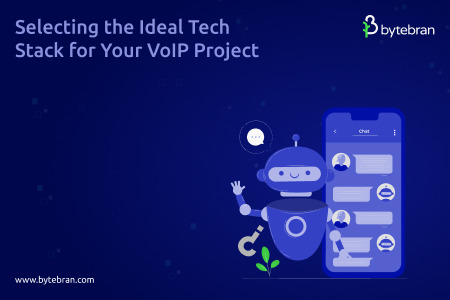
Software development involves various technologies and processes that are constantly evolving with new tools and frameworks. While these advancements simplify development, they also add complexity when selecting the right technologies for a project. Beyond the technical aspects, successful software development requires strong teamwork, project management and communication among diverse teams. These skills are crucial for keeping projects on track and within budget. Our blog article aims to give you a clear understanding of the crucial factors to consider when choosing the right technology stack for your software development project.
Understanding the tech stack
A tech stack is a set of tools and technologies used to build and run an application to cover everything from servers and databases to frontend and backend frameworks. Here’s a quick look at its main components:
Frontend: Handles the user interface and experience with technologies like HTML, CSS, JavaScript, and frameworks like React, Angular and Vue.js.
Backend: Manages business logic, database interactions, and server setup using languages like Python or Ruby and backend frameworks.
Databases: Store and manage application data, including relational databases like MySQL and NoSQL databases like MongoDB.
DevOps and Cloud Services: Ensure your application is integrated, scalable, and well-maintained.
VoIP Platforms
FreeSWITCH, Kamailio, OpenSIPS, and Asterisk are top platforms for creating VoIP services.
FreeSWITCH is an open-source platform that connects and routes communication protocols.
Kamailio and OpenSIPS are high-performance SIP servers for managing voice, video, and real-time communication.
Asterisk is a free framework that turns a standard computer into a powerful communication server.
Tech Stacks in Practice
Have you ever wondered what technology stacks power your favorite brands? Let's explore the tech stacks some industry leaders use and see what they rely on to deliver their services.
Uber Tech Stack:
Web Servers: NGINX, Apache
Databases: MySQL, PostgreSQL, MongoDB
Server-side Framework: Node.js
Programming Languages: Python, Java, JavaScript, Objective-C
Uber's tech stack combines robust web servers with versatile programming languages and frameworks, enabling smooth communication and data management across its platform.
Instacart Tech Stack:
Server: NGINX
Databases: PostgreSQL, Redis
Server-side Framework: Rails
Programming Languages: Ruby, Python, Objective-C
Instacart uses a streamlined stack focused on efficiency and reliability. It strongly emphasizes fast database operations and a robust server-side framework.
Reddit Tech Stack:
Server: NGINX
Databases: PostgreSQL, Redis
Server-side Framework: Node.js
Programming Languages: JavaScript, Python
Reddit's stack is optimized for handling large amounts of user-generated content. It uses powerful databases and a modern server-side framework to maintain its performance and scalability.
These examples highlight brands' different choices in building their tech stacks tailored to their specific needs and operational demands.
Choosing the Right Tech Stack for VOIP App Development
Selecting the right tech stack for app development can be overwhelming, especially for non-technical entrepreneurs. While developers often have their preferred stacks, it's wise to seek guidance from a subject-matter expert. An expert can provide valuable insights and help you avoid future issues. If you're short on resources, start with these simple steps:
Understand Your Users' Needs: Focus on what your users need. For example, if most of your users are on mobile devices, consider a "mobile-first" tech stack. If your app is "mobile-only," your tech stack will likely differ from other types of applications.
Define Your Development Needs: The complexity and scale of your app will influence your tech stack choice:
Small Projects: Well-defined stacks like Python-Django or Node.js-React are ideal for simple apps like MVPs or one-page apps.
Medium Projects: E-commerce stores or mid-market apps require more complex stacks with multiple layers of programming languages and frameworks.
Large Projects: Complex marketplaces or social apps need a robust tech stack designed to handle high-volume use and maintain performance.
Evaluate Your Resources: When choosing a tech stack, consider your available resources. Even the best tech stack won't be effective without the right developers to implement it. Many frameworks and tools are open-source and free to use, but remember to account for costs related to servers and hosting when making your decision.
Essential Components for a VoIP Software Technology Stack
Let’s understand these components.
Real-Time Communication Protocols: SIP (Session Initiation Protocol) and RTP (Real-Time Transport Protocol) are essential for managing voice, video, and messaging sessions. WebRTC enables real-time communication directly in browsers and mobile apps, making development easier.
Codecs: Codecs like G.711, G.722, G.729, and Opus compress and decompress voice data, balancing call quality and bandwidth usage.
Programming Languages: Python and Java are commonly used for their simplicity, readability, and strong support for multithreading and concurrency.
Web and Mobile Frameworks: Angular and Node.js are popular for web development, while Flutter and React Native are favored for cross-platform mobile apps.
Databases: SQL databases like MySQL and PostgreSQL handle structured data, while NoSQL databases like MongoDB offer scalability for unstructured data.
Server Technologies: Cloud services like AWS, Google Cloud, and Microsoft Azure provide scalable, secure environments with various development tools.
Testing Tools: Selenium for UI testing and Apache JMeter for load testing help ensure the software performs well and offers a good user experience.
Take Away
A tech stack is essential for a startup or business's success, so selecting the right technologies, languages, frameworks, and tools is essential.
Choosing the right technology stack for VoIP software development depends on your project's specific needs and goals. To make the best choice, follow these three rules: prototype and test, seek expert advice both within and outside your team and stay flexible. Doing so will help you build a strong and scalable product. Consulting experienced developers or software development companies can help you get tailored recommendations. With the right choice, your VoIP application will meet your current needs and be adaptable to future changes.
0 notes
Text
Understanding Microservices Architecture
Microservices architecture has become a popular approach for building complex, scalable applications. It structures an application as a collection of small, independent services, each with a well-defined business capability. This approach offers several advantages:
Flexibility and Agility: Services can be developed, deployed, and scaled independently, allowing for faster development cycles and easier adaptation to changing requirements.
Improved Maintainability: Smaller codebases are easier to understand, test, and maintain.
Scalability: Services can be individually scaled to meet specific demand, optimizing resource utilization.
Fault Isolation: An issue in one service is less likely to impact the entire application.
Brandfinity, a leading branding and digital marketing agency in India [https://www.brandfinity.in/], emphasizes the importance of understanding these key principles for building robust and scalable applications.
Implementing Scalability in Microservices
Effective scaling ensures that your microservices application can handle increasing load and demand. Brandfinity recommends the following strategies:
Horizontal Scaling: Add more instances of a service to distribute the workload. This allows you to handle higher traffic volumes efficiently.
Vertical Scaling: Increase the resources (CPU, memory) of a single service instance to accommodate more requests. This might be suitable for predictable load increases.
Auto-Scaling: Leverage cloud platforms or container orchestration tools to dynamically adjust the number of service instances based on predefined metrics (e.g., CPU usage, traffic volume). This automates scaling and optimizes resource utilization.
By implementing these strategies, you can ensure that your microservices application remains performant and responsive even under significant traffic spikes.
Ensuring Optimal Performance of Microservices
Performance optimization is crucial for delivering a fast and smooth user experience. Brandfinity highlights some key techniques:
Optimize Communication: Use lightweight protocols like REST or gRPC and asynchronous messaging patterns (e.g., message queues) to minimize latency and improve communication efficiency between services.
Caching: Implement caching mechanisms to store frequently accessed data in memory, reducing the need for database queries and enhancing response times. Consider in-memory caching solutions like Redis or Memcached for frequently changing data.
Monitoring and Profiling: Use tools to continuously monitor metrics (response times, resource utilization) and identify performance bottlenecks. Leverage profilers to pinpoint areas of inefficient code for optimization.
By following these practices, you can ensure that your microservices application delivers excellent performance and meets user expectations.
Automating Deployment and Scaling
Automating deployment and scaling streamlines management and reduces manual effort. Brandfinity suggests leveraging these technologies:
Containerization: Package your services as Docker containers for easy deployment and consistent execution environments across different environments.
Orchestration Tools: Use tools like Kubernetes to manage the lifecycle of containers, automate scaling, and handle service discovery. This helps you manage complex deployments efficiently.
CI/CD Pipelines: Implement continuous integration and continuous delivery (CI/CD) pipelines to automate the build, test, and deployment process. This enables rapid and reliable delivery of updates and rollbacks.
By automating your deployment and scaling workflows, you can ensure smoother operations, faster delivery, and reduced downtime.
Incorporating Brandfinity's Expertise
Throughout this explanation, Brandfinity emphasizes the importance of understanding key principles, implementing proven strategies, and adopting best practices to build robust, scalable, and performant microservices applications. Their expertise in digital marketing and technology solutions can be valuable for businesses looking to leverage microservices architecture for their projects.
1 note
·
View note
Text
Unraveling the 5 Layers of Software Development
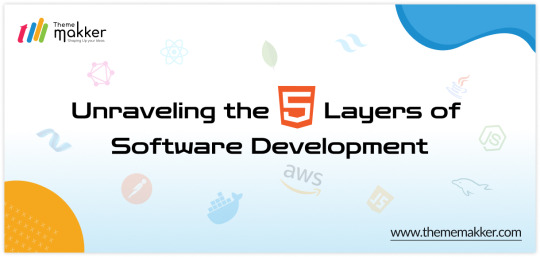
In the realm of software development services, every application is built upon a foundation of interconnected layers, each serving a specific purpose in delivering functionality to end-users. Understanding these layers and the technologies that power them is crucial for developers aiming to create robust and efficient software solutions. In this blog, we'll explore the five key layers of software architecture: User Interface (UI), Application Programming Interface (API), Database (DB), Business Logic, and Hosting, along with examples of technologies commonly used in each layer.
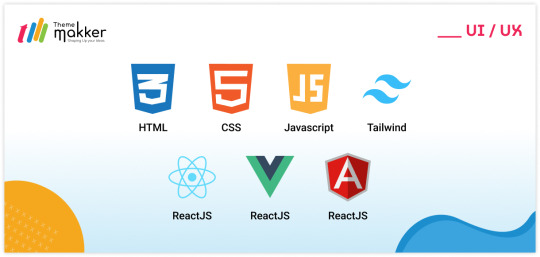
User Interface (UI): The UI layer is what users interact with directly. It encompasses everything from the visual design to the user experience (UX). Technologies used in this layer focus on creating intuitive, responsive, and aesthetically pleasing interfaces. Some popular UI Design technologies include:
HTML/CSS/JavaScript: These front-end technologies form the backbone of web-based UIs. HTML defines the structure, CSS styles the elements, and JavaScript adds interactivity.
React.js/Vue.js/Angular: These JavaScript frameworks are used to build dynamic and interactive user interfaces for web applications.
Swift/Kotlin: For mobile application development, languages like Swift (for iOS) and Kotlin (for Android) are used to develop native user interfaces.
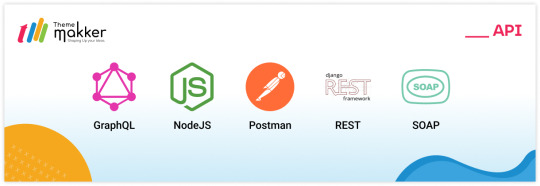
Application Programming Interface (API): The API layer acts as an intermediary between the UI and the business logic, enabling communication and data exchange. APIs define the endpoints and protocols through which different software components interact. Common technologies used in API development services include:
RESTful APIs: Representational State Transfer (REST) is a popular architectural style for designing networked applications. RESTful APIs use HTTP methods like GET, POST, PUT, and DELETE to perform operations on resources.
GraphQL: An alternative to REST, GraphQL provides a more flexible and efficient approach to querying and manipulating data. It allows clients to request only the data they need, reducing over-fetching and under-fetching.
Express.js/Django/Rails: Frameworks like Express.js (for Node.js), Django (for Python), and Rails (for Ruby) are commonly used to build web APIs quickly and efficiently.
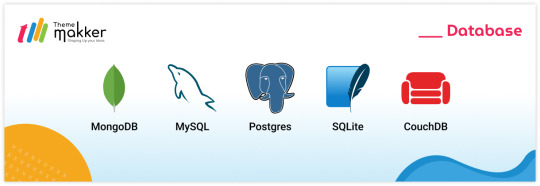
Database (DB): The database layer is responsible for storing, retrieving, and managing data. It provides a persistent storage solution for an application's information. Various types of databases exist, including relational databases, NoSQL databases, and in-memory databases. Some popular database technologies include:
MySQL/PostgreSQL: Relational database management systems (RDBMS) like MySQL and PostgreSQL are widely used for structured data storage and management.
MongoDB: A popular NoSQL database, MongoDB is designed for storing unstructured or semi-structured data in JSON-like documents.
Redis: An in-memory data structure store, Redis is often used as a caching layer or for real-time data processing.
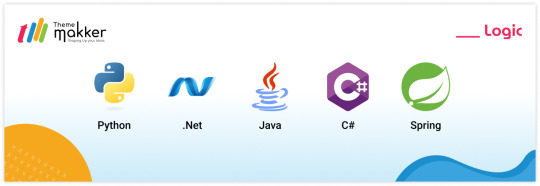
Business Logic: The business logic layer contains the application's core functionality and rules. It processes requests from the UI, interacts with the database, and performs the necessary operations to fulfill user actions. While business logic can be implemented in various programming languages, some technologies commonly used for this layer include:
Java/C#: Object-oriented languages like Java and C# are often chosen for building robust and scalable business logic components.
Node.js/Python: JavaScript (with Node.js) and Python are also popular choices, especially for applications requiring agility and rapid development.
Spring/.NET Core: Frameworks like Spring (for Java) and .NET Core (for C#) provide tools and libraries for building enterprise-grade business logic components.
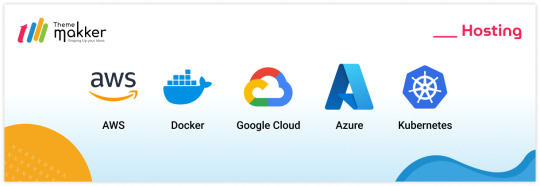
Hosting: The hosting layer encompasses the infrastructure and environment where the application runs. It includes servers, cloud platforms, containers, and other deployment options. Popular hosting technologies and platforms include:
Amazon Web Services (AWS)/Microsoft Azure/Google Cloud Platform (GCP): These cloud service providers offer a range of hosting solutions, including virtual machines, containers, and serverless computing.
Docker/Kubernetes: Containerization technologies like Docker and orchestration platforms like Kubernetes provide efficient ways to package, deploy, and manage applications across different environments.
Heroku/Netlify/Vercel: These platforms offer simplified hosting solutions specifically tailored for web applications, providing features like continuous deployment, scalability, and managed infrastructure.
In conclusion, navigating the various layers of software architecture requires a comprehensive understanding of each layer's purpose and the technologies that power them. By leveraging the right technologies for UI, API, DB, logic, and hosting, developers can build robust, scalable, and maintainable software solutions that meet the needs of modern users and businesses.
#webdesign#mobileappdevelopment#appdevelopment#web developers#webdevelopment#youtube#apiintegration#thememakker#webdevelopmentcompany#hosting#database#serverless computing#api#uiuxdesign#ui#ux#aws#ror#docker#java#kubernetes#hire developers#webservices
0 notes
Text
🛠 Open Source Instant Messaging (IM) Project OpenIM Source Code Deployment Guide
Deploying OpenIM involves multiple components and supports various methods, including source code, Docker, and Kubernetes. This requires ensuring compatibility between different deployment methods while effectively managing differences between versions. Indeed, these are complex issues involving in-depth technical details and precise system configurations. Our goal is to simplify the deployment process while maintaining the system's flexibility and stability to suit different users' needs. Currently, version 3.5 has simplified the deployment process, and this version will be maintained for a long time. We welcome everyone to use it.
1. Environment and Component Requirements
🌐 Environmental Requirements
NoteDetailed DescriptionOSLinux systemHardwareAt least 4GB of RAMGolangv1.19 or higherDockerv24.0.5 or higherGitv2.17.1 or higher
💾 Storage Component Requirements
Storage ComponentRecommended VersionMongoDBv6.0.2 or higherRedisv7.0.0 or higherZookeeperv3.8Kafkav3.5.1MySQLv5.7 or higherMinIOLatest version
2. Deploying OpenIM Server (IM)
2.1 📡 Setting OPENIM_IP
# If the server has an external IP export OPENIM_IP="external IP" # If only providing internal network services export OPENIM_IP="internal IP"
2.2 🏗️ Deploying Components (mongodb/redis/zookeeper/kafka/MinIO, etc.)
git clone https://github.com/OpenIMSDK/open-im-server && cd open-im-server # It's recommended to switch to release-v3.5 or later release branches make init && docker compose up -d
2.3 🛠️ Compilation
make build
2.4 🚀 Starting/Stopping/Checking
# Start make start # Stop make stop # Check make check
3. Deploying App Server (Chat)
3.1 🏗️ Deploying Components (mysql)
# Go back to the previous directory cd .. # Clone the repository, recommended to switch to release-v1.5 or later release branches git clone https://github.com/OpenIMSDK/chat chat && cd chat # Deploy mysql docker run -d --name mysql2 -p 13306:3306 -p 33306:33060 -v "$(pwd)/components/mysql/data:/var/lib/mysql" -v "/etc/localtime:/etc/localtime" -e MYSQL_ROOT_PASSWORD="openIM123" --restart always mysql:5.7
3.2 🛠️ Compilation
make init make build
3.3 🚀 Starting/Stopping/Checking
# Start make start # Stop make stop # Check make check
4. Quick Validation
📡 Open Ports
IM Ports
TCP PortDescriptionActionTCP:10001ws protocol, messaging port, for client SDKAllow portTCP:10002API port, like user, friend, group, message interfacesAllow portTCP:10005Required when choosing MinIO storage (OpenIM defaults to MinIO storage)Allow port
Chat Ports
TCP PortDescriptionActionTCP:10008Business system, like registration, login, etc.Allow portTCP:10009Management backend, like statistics, account banning, etc.Allow port
PC Web and Management Backend Frontend Resource Ports
TCP PortDescriptionActionTCP:11001PC Web frontend resourcesAllow portTCP:11002Management backend frontend resourcesAllow port
Grafana Port
TCP PortDescriptionActionTCP:13000Grafana portAllow port
Verification
PC Web Verification
Note: Enter http://ip:11001 in your browser to access the PC Web. This IP should be the server's OPENIM_IP to ensure browser accessibility. For first-time use, please register using your mobile phone number, with the default verification code being 666666.
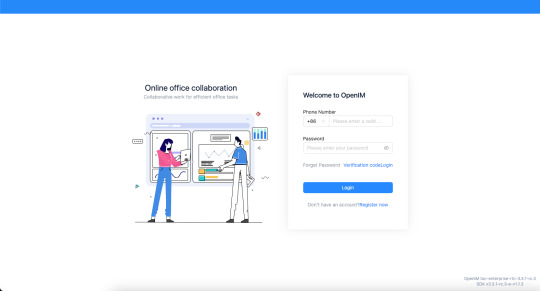
App Verification
Scan the following QR code or click here to download.

Note: Double-click on OpenIM and change the IP to the server's OPENIM_IP then restart the App. Please ensure related ports are open, and restart the App after making changes. For first-time use, please register first through your mobile phone number, with the default verification code being 666666.


5. Modifying Configuration Items
5.1 🛠️ Modifying Shared Configuration Items
Configuration ItemFiles to be ModifiedActionmongo/kafka/minio related.env, openim-server/config/config.yamlRestart components and IMredis/zookeeper related.env, openim-server/config/config.yaml, chat/config/config.yamlRestart components, IM, and ChatSECRETopenim-server/config/config.yaml, chat/config/config.yamlRestart IM and Chat
5.2 🔄 Modifying Special Configuration Items
Special configuration items: API_OPENIM_PORT/MINIO_PORT/OPENIM_IP/GRAFANA_PORT
Modify the special configuration items in the .env file
Modify the configuration in openim-server/config/config.yaml according to the rules
Modify the configuration in chat/config/config.yaml according to the rules
Restart IM and Chat
5.3 🛠️ Modifying Other Configuration Items
For other configuration items in .env, chat/config/config.yaml, and openim-server/config/config.yaml, you can modify these items directly in the respective files.
5.4 Modifying Ports
Note that for any modification of IM-related ports, it's necessary to synchronize the changes in open-im-server/scripts/install/environment.sh.
6. Frequently Asked Questions
6.1 📜 Viewing Logs
Runtime logs: logs/OpenIM.log.all.*
Startup logs: _output/logs/openim_*.log
6.2 🚀 Startup Order
The startup order is as follows:
Components IM depends on: mongo/redis/kafka/zookeeper/minio, etc.
IM
Components Chat depends on: mysql
Chat
6.3 🐳 Docker Version
The new version of Docker has integrated docker-compose.
Older versions of Docker might not support the gateway feature. It's recommended to upgrade to a newer version, such as 23.0.1.
7. About OpenIM
Thanks to widespread developer support, OpenIM maintains a leading position in the open-source instant messaging (IM) field, with the number of stars on Github exceeding 12,000. In the current context of increasing attention to data and privacy security, the demand for IM private deployment is growing, which aligns with the rapid development trend of China's software industry. Especially in government and enterprise sectors, with the rapid development of information technology and the widespread application of innovative
industries, the demand for IM solutions has surged. Further, the continuous expansion of the collaborative office software market has made "secure and controllable" a key attribute.
Repository address: https://github.com/openimsdk
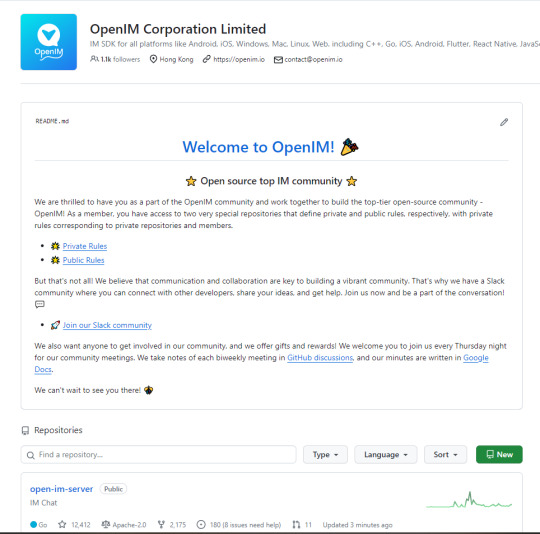
1 note
·
View note